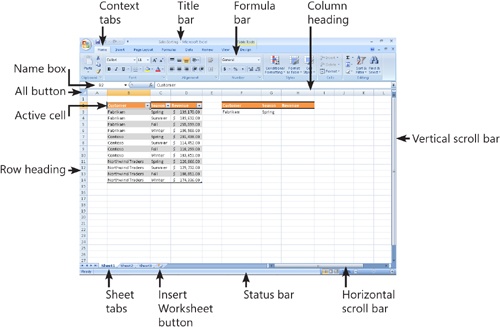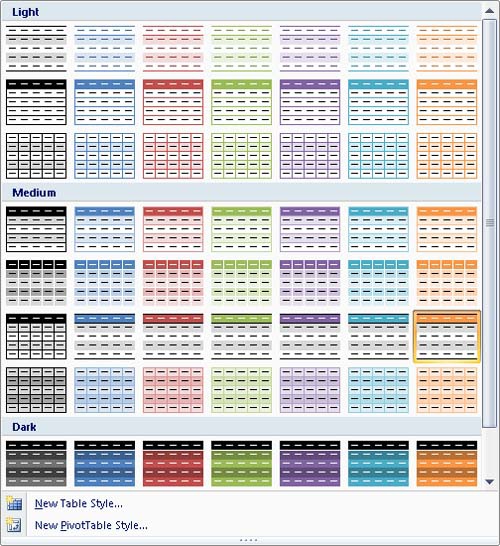In this section:
Microsoft Excel 2007 is designed to help you store, summarize, and present data relevant to your business or home life. You can create spreadsheets to track products and sales, or, just as easily, build spreadsheets to keep track of your personal investments or your kids’ soccer scores. Regardless of the specific use you have in mind, Excel is a versatile program you can use to store and retrieve data quickly.
Working with Excel is pretty straightforward. The program has a number of preconstructed workbooks you can use for tasks such as tracking work hours for you and your colleagues or computing loan payments, but you also have the freedom to create and format workbooks from scratch, giving you the flexibility to build any workbook you need.
This section of the book covers the basics: how to start Excel and shut it down, how to open Excel documents, how to change the Excel window’s size and appearance, and how to get help from within the program. There’s also an overview of the Excel window, with labels for the most important parts of the program, and a close-up look at the new user interface. You can use those images as touchstones for learning more about Excel.
In many ways, an Excel worksheet is like the ledger in your checkbook. The page is divided into rows and columns, and you can organize your data using those natural divisions as a guide. The box formed by the intersection of a row and a column is called a cell. You can identify individual cells by their column letters and row numbers—this combination, which identifies the first cell in the first column as cell A1, is called a cell reference. The following graphic shows you the important features of the Excel 2007 screen.
When the Microsoft Office user interface design team sat down to update the 2007 Microsoft Office system, their goal was to give users a single place to look for commands. In previous versions of Office, you had to look through dozens of toolbars and menus to find specific commands. In Excel 2007, you can find what you need in one place: the ribbon at the top of the screen.
After you’ve entered your data into a worksheet, you can change the data’s appearance by using galleries that appear on the user interface. The ribbon has three types of galleries: galleries that appear in a dialog box, galleries that appear as a drop-down menu when you click a user interface item, and galleries that appear within the user interface itself. The following graphic shows a styles gallery and points out the gallery’s controls.
One significant difference between Excel 2007 and previous versions of the program is how Excel tells you what will happen if you apply a formatting change. Rather than make you apply the change or click a preview button, Excel 2007 reformats the selected objects using the gallery item under your mouse pointer. All you need to do is move your mouse to see what your objects will look like when you’re finished.



